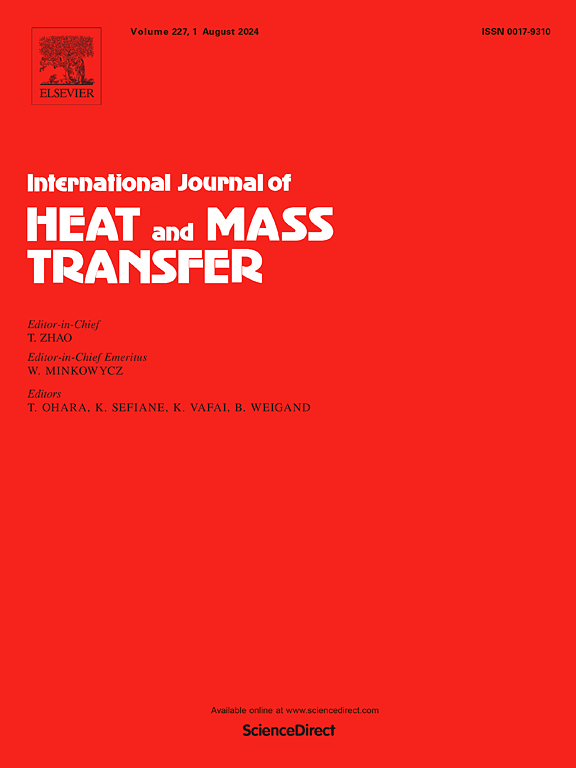Transfer machine learning framework for efficient full-field temperature response reconstruction of thermal protection structures with limited measurement data
IF 5
2区 工程技术
Q1 ENGINEERING, MECHANICAL
International Journal of Heat and Mass Transfer
Pub Date : 2025-02-12
DOI:10.1016/j.ijheatmasstransfer.2025.126785
引用次数: 0
Abstract
Thermal protection structures are key components of reusable launch vehicles. As an important basis for monitoring the health status of the vehicle, it is necessary to timely and accurately predict the full-field temperature response of the thermal protection structure. In this work, a novel model is proposed for solving this problem based on physical information neural network (PINN) and transfer learning techniques, in which both the direct and inverse heat conduction problems are involved. A thermal protection structure (TPS) is taken as the research object. The corresponding simulation model is obtained based on the experimental model, which is used to train the PINN pre-model and to verify the validity and accuracy of the pre-model. Combining pre-model and limited experimental data, three different fine-tuning strategies are utilized for transfer learning. Furthermore, the PINN model obtained based on the optimal fine-tuning strategy is chosen to complete the temperature field reconstruction and thermophysical parameter recognition. Results demonstrate that the proposed method not only solves the complex problem of heat transfer across material layers but also performs well in the face of complex heat flow conditions. The experimental model obtained under the fine-tuning strategy of freezing the first two fully connected layers not only performs better in terms of accuracy and efficiency but also has the best stability during training. The training efficiency of the model is improved by more than 7 times through transfer learning. This suggests the desirability of combining transfer learning and PINN to construct experimental models dealing with direct and inverse heat conduction problems.
求助全文
约1分钟内获得全文
求助全文
来源期刊
CiteScore
10.30
自引率
13.50%
发文量
1319
审稿时长
41 days
期刊介绍:
International Journal of Heat and Mass Transfer is the vehicle for the exchange of basic ideas in heat and mass transfer between research workers and engineers throughout the world. It focuses on both analytical and experimental research, with an emphasis on contributions which increase the basic understanding of transfer processes and their application to engineering problems.
Topics include:
-New methods of measuring and/or correlating transport-property data
-Energy engineering
-Environmental applications of heat and/or mass transfer

 求助内容:
求助内容: 应助结果提醒方式:
应助结果提醒方式:


